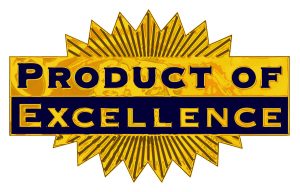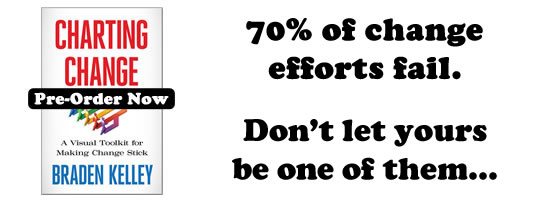Building Product Lifecycle Excellence
 Developing products in today’s market is a formidable task. Cycle times are shrinking and the pressure to do more with less is increasing. As the stress to get products to market faster increases, little room is left for learning through mistakes. But isn’t making mistakes an important part of the process?
Developing products in today’s market is a formidable task. Cycle times are shrinking and the pressure to do more with less is increasing. As the stress to get products to market faster increases, little room is left for learning through mistakes. But isn’t making mistakes an important part of the process?
Yes, says Kimberly Wiefling, corporate success expert and author, but don’t make the same mistakes others have. Make new ones. Kimberly has helped numerous companies improve their processes and results developing products. She has worked all over the US, Europe and Asia, including traveling to Japan more than 100 times to help Japanese companies globalize. Her superpower is bringing people with diverse backgrounds and cultures together, across borders and boundaries of every kind, to achieve what none could do alone.
Kimberly shares the three elements needed for product excellence:
- executive sponsorship,
- cross-functional core teams, and
- the customer.
How do you define a product lifecycle?
A product lifecycle is some kind of system or process that helps you take an idea to a product or service, build it, test it, ship it and support it routinely in the hands of the customer. [Note that this is the product lifecycle, different from the definition of the Product Life Cycle, which explains the life of a product in the market place from launch/introduction through decline and discontinuation].
What is the state of product lifecycle in most companies?
It’s really changed over the years. Back when I first started doing product development program leadership, there was a lack of process discipline, and there were people who felt that this was creativity and we couldn’t put boundaries on their creativity by having some kind of methodology. Then it swung to the other extreme with processes, phases, milestones and deliverables. Then we got agile and iterations and process discipline around it. So it’s gone the spectrum from no process to a whole lot of process which may or may not be adding value and is not always used correctly.
What are the elements needed for excellence?
The three big areas you have are the executive sponsorship, the cross-functional core teams, and the customer.
Why are executive sponsors important?
They remove barriers, provide resources, and keep what is important to the organization reflected in the product. Executive sponsors also provide direction for the seemingly impossible. There’s a famous example of that where the head of Toyota at one point said we’re going to have a hybrid car. His engineers didn’t quite get that, and he came back again and again and said, no, we will have a car like this, I don’t care if it makes engineering sense, or even economic sense, or even if it makes ecological sense. We are going to be the thought leader in this area. That is an example of executive sponsorship.
The next element is cross-functional core teams. Tell us about that.
You can’t just put together a product or a service like a Frankenstein, just stitched together. It will just be a monster. You need a cross-functional core team that is involved with the product concept at the beginning and stays together throughout the process, not handing the project off to others between stages of work. The core team provides continuity.
What about the third element, the customer?
You need to create something that, in the whole, has the qualities that are being looked for by the customer and the market. One tool to use to create what customers want is prototyping. I’ve worked with a lot of companies doing leadership development programs. Part of this is to form teams of four or five people that work on real projects. The projects that make the most progress are those that get something on paper, like a drawing, show it to the various stakeholders, and get feedback as early and quickly as possible. Imagine they’ve gone from an idea that seemed impossible to a working prototype that a lot of their stakeholders, including the customers, have provided feedback on.
Making mistakes, Kimberly says, is an important part of the process, as long as the mistakes come from the creative process, not from mistakes that have been made in the project management process. “Let’s make new and exciting mistakes.â€
Listen to the interview with Kimberly Wiefling on The Everyday Innovator Podcast.
image credit: thomas-pr.com
Wait! Before you go…
Choose how you want the latest innovation content delivered to you:
- Daily — RSS Feed — Email — Twitter — Facebook — Linkedin Today
- Weekly — Email Newsletter — Free Magazine — Linkedin Group
 Chad McAllister, PhD is a product innovation guide, innovation management educator, and recovering engineer. He leads Product Innovation Educators, which trains product managers to create products customers love. He also hosts The Everyday Innovator weekly podcast, sharing knowledge from innovation thought leaders and practitioners. Follow @ChadMcAllister
Chad McAllister, PhD is a product innovation guide, innovation management educator, and recovering engineer. He leads Product Innovation Educators, which trains product managers to create products customers love. He also hosts The Everyday Innovator weekly podcast, sharing knowledge from innovation thought leaders and practitioners. Follow @ChadMcAllister
NEVER MISS ANOTHER NEWSLETTER!
LATEST BLOGS
Three things you didn’t know about credit cards
Photo by Ales Nesetril on Unsplash Many of us use credit cards regularly. From using them for everyday purchases to…
Read MoreFive CV skills of a business-minded individual
Photo by Scott Graham on Unsplash The skills listed on a CV help employers quickly understand your suitability for a…
Read More



